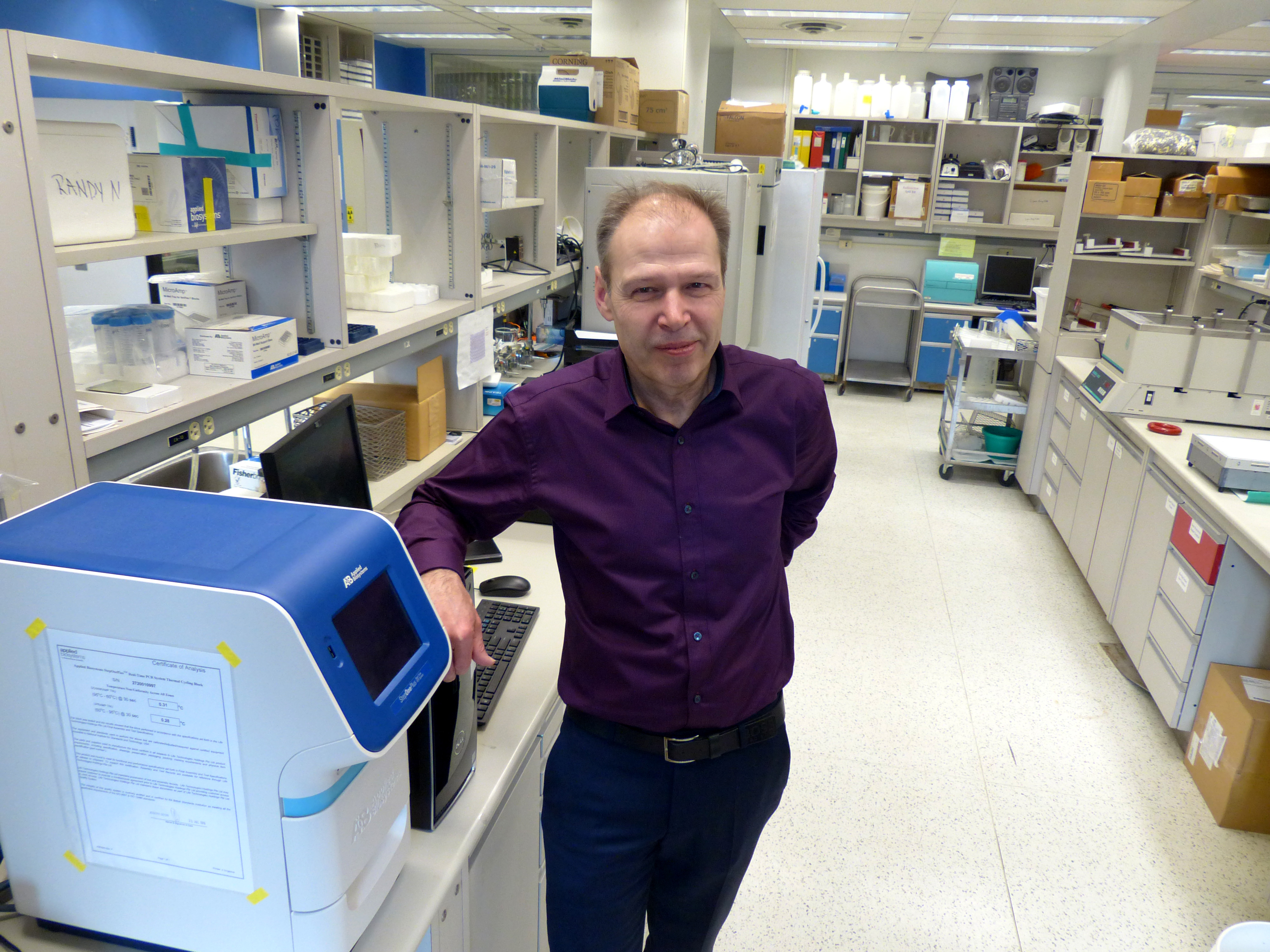
Richard Lehner, professor in the Department of Pediatrics, is one of 30 UAlberta researchers sharing $19.2 million in 2018 Canadian Institutes of Health Research (CIHR) project grants.
Obesity is on the rise worldwide and can lead to a number of health issues including increased risk of heart disease, hypertension, diabetes, cancer, reproductive disorders, mood disorders and fatty liver disease. Richard Lehner's new CIHR funding will take his research on understanding fat metabolism in the body a step closer to his goal of developing a treatment for non-alcoholic fatty liver disease.
What is non-alcoholic fatty liver disease?
Non-alcoholic fatty liver disease (NAFLD) is a major health problem that is caused by extra fat building up in a person's liver cells. Worldwide, this disease affects about 30 per cent of the adult population and more than 70 per cent of people with obesity.
Why does fat build up in our liver and what are the consequences?
Fat is an important energy source for our bodies. But if we are obese, with an excess of fat in our body, the fat begins to look for more places to accumulate. When it accumulates in the liver, this is called fatty liver disease. Fatty liver disease can progress to liver failure and the need for a liver transplant. Currently, there is no effective treatment for fatty liver disease.
What is the relationship between fatty liver disease and heart disease?
There can be increased risk of heart disease because fat in the liver gets packaged into very low density lipoprotein (VLDL) and, when secreted into the blood, becomes LDL (bad cholesterol) that is a risk for heart disease. Decreasing fat in the liver also has a direct effect on mitigating the risk of heart disease.
There are many companies and researchers working on decreasing VLDL to reduce the risk of heart disease, but any drug treatments developed so far have resulted in fatty liver―so that is not a drug that can go on the market. Everyone keeps trying.
What is your research focused on?
Ten years ago, our lab was working on cardiovascular disease research by focusing on the role of the liver. We were looking for proteins in the liver that are involved in creating VLDL and found a protein, called TGH, that we could modify to decrease VLDL secretion. Although we expected this to also result in fatty liver, as other treatments had, we still wanted to learn more about the mechanism for TGH.
To our surprise, when we inhibited TGH not only did we decrease VLDL secretion, but the liver didn't get fat! So that was very interesting, quite novel, because now we were targeting cardiovascular disease and also fatty liver disease.
What are the questions you hope to answer in the next five years with your research?
How does TGH work? We want to figure out how inhibiting TGH regulates release of fat in the liver and how it regulates decrease of the synthesis of new fat in the liver. We are curiosity-driven and it's not enough to just know that it works, but how it works.
Secondly, can we develop a treatment to reverse, cure or stop progression of fatty liver disease ―without increasing cardiovascular disease risk? So far, we have proof of principle that inhibiting TGH can create a prevention of sorts for fatty liver disease. Practically speaking, we would not give everyone a preventative treatment every day if we don't know they need it. So now we need to figure out if there is a possible treatment for people who already have developed fatty liver disease.
A third question we want to answer is why some people seem to be naturally protected against developing fatty liver disease. About four per cent of the population have mutations in the TGH protein that lower its activity so, if we are correct, that would mean that these four per cent of the population could be naturally protected against developing fatty liver disease.
How exciting is it to see how much progress you have made toward a treatment for fatty liver disease?
In 10 years, we have gone from discovering the role of TGH in VLDL creation to now actually looking at models of disease to see what happens if we manipulate levels of this protein in disease states, what happens to the disease. So I think we have progressed!
Our research is still considered pre-clinical, but if this works, then I think that the gates would be open to really go forward to treatments for people. We have already collaborated with a pharmaceutical company to develop the inhibitor, in the first part of our research, and so now we not only have a clear need to treat this disease but we also have an interest from partners moving forward.
The value of Richard Lehner's 2018 Canadian Institutes of Health Research project grant is $1,143,675 over five years.